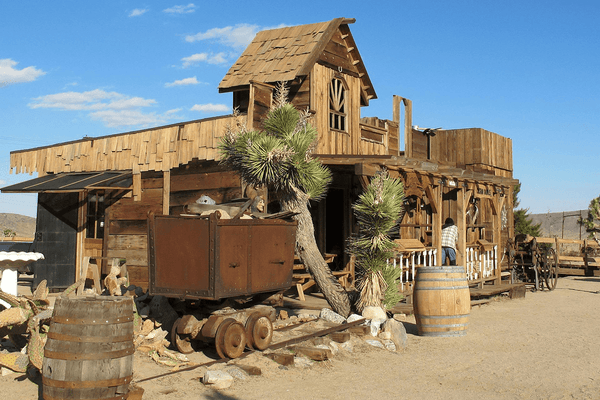WHAT IS BOURBON
"BOTTLED IN BOND?"
In order for a spirit to be bonded, it must undergo a distillation season at one distillery by the same distiller in the United States. It must also be aged in a bonded facility for a minimum of four years. It must also be bottled at 100 proof with a 50% ABV...

On the label of the spirit, a consumer must be able to identify the location of the distillery and bottling facility. These labels are indicative of the distillery's skill as well as the integrity of the spirits themselves.
If you look at the history of spirits in the United States, you'll see that the integrity of spirits was not always consistent. Any kind of liquid could have been in the bottles labeled "bourbon" or "whiskey." The government felt required to intervene. A bottled-in-bond spirit would make a promise to the drinker.
Let's Talk About the Bottled-in-Bond Act of 1897
The Bottled in Bond Act of 1897 stemmed from the inconsistent quality of American whiskey in the late 1800s. The United States government decided that it would provide a tax incentive for distilleries that ensured their spirits met specific requirements. Essentially, the government would guarantee that the spirits produced were authentic. Any spirit could be bonded, but bonded whiskeys were the most common.
For a long time, anything could be used to flavor or color spirits. For instance, a distiller might use tobacco to flavor a bourbon. There was little quality assurance, and consumers could have been buying anything when they purchased a bottle of whiskey. Sometimes, people who bought a bottle of whiskey weren't receiving whiskey at all. In many cases, a distiller would simply add new flavors to bad whiskey rather than make good spirit. They could save some cash doing this, even if it was detrimental to the consumer. Quality distillers were clearly unhappy with this, and so were consumers.
Whiskey distillers, including Colonel Edmund Haynes Taylor Jr., fought to enact these regulations. Secretary of the Treasury John G. Carlisle worked with the group in an effort to ensure the quality of spirits. The Treasury was put in charge of ensuring compliance with regulations.
A Return to Bottled-in-Bond Spirits?
For a while, after the mid-1900s, Americans began to drink more wine, beer, and vodka. Whiskey sales had decreased considerably. With this change, bottled-in-bond whiskey was also losing steam. It had become associated with an older generation, and many distillers took note of this. They also noticed a shift in the American palate, and the flavor of whiskey began to change to accommodate this. Some distilleries opted for lower-proof whiskeys, dropping the bottled-in-bond branding.
Now, the tide is changing. In fact, the bonded branding could make a strong return. Distilleries are starting to embrace the history of whiskey in America, and educated consumers are hungry for new drinks. Additionally, many distillers care about the quality of their spirits. They want to create authentic whiskeys based on traditional principles, and consumers are ready for it.
Of course, circumstances are different now. Whiskey does not contain some of the outright dangerous ingredients that it may have in the 1800s. Still, people who drink whiskey are more in tune with what they consume than they were in the past. They know that the devil is in the details. Some distillers might look for ways to source different spirits or to mature whiskey for a shorter period of time while still getting a rich flavor. Others might begin to offer the bottled-in-bond label so that drinkers know exactly what they are drinking.
How To Enjoy Bottled-in-Bond Spirits
You will still find some distilleries in the United States that create bonded whiskeys and other spirits. While they certainly are not the norm, you can get your hands on a bottle if you look hard. If you are lucky enough to find a bonded spirit, you may be wondering how to put it to good use. While you can certainly drink your whiskey or bourbon neat or on the rocks, these spirits still work well in cocktails. The flavor is bold enough to shine through a mixed drink, but the flavor is also delightful on its own because it is less diluted with water than some others.
You may be tempted to believe that all bonded whiskeys or bourbons taste alike, but this is not true. One great benefit that bottled-in-bond spirits offer is that each distillery maintains its own unique flavor. The regulations for a spirit to be bonded do not require a specific grain mash, for instance, so you can still expect variation between brands. This is all the more encouragement to seek out different bottles and see which whiskey you like best.
Another benefit of bottled-in-bond whiskies is that they are not as expensive as you might think. For instance, you are likely to pay less for a bonded whiskey than for a spirit that has been aged for 20 years. This gives you the opportunity to try a unique, bold flavor at a lower price point.
See What Bonded Spirits Have To Offer
As more distilleries see the benefits of offering these spirits, you'll see more bonded bourbon and whiskey hitting the shelves soon. If you love whiskey, you have a lot to look forward to. Authentic bottled-in-bond whiskey is not far out of reach, and the history of these spirits is enough encouragement to give it a try. Each sip is a reminder of American history and the drive for authenticity and originality found in American distilleries.






